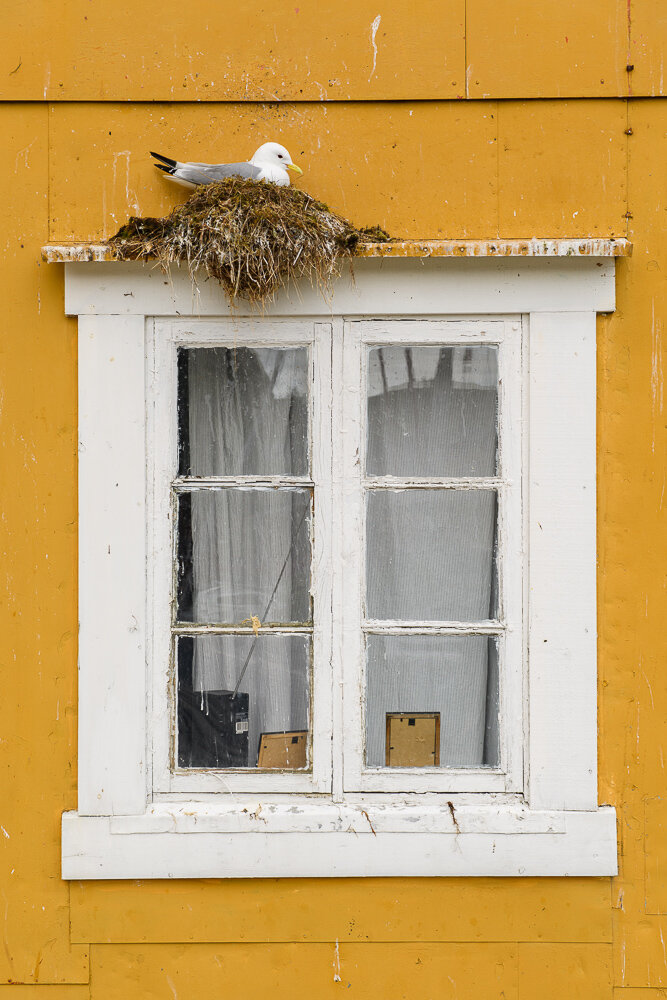Geordie Kittiwakes
Lofoten Islands
During the summer of 2016, I spent three weeks in the Lofoten Islands where, amongst other things, I spent time photographing Kittiwakes nesting on the traditional red and yellow painted wooden buildings, industrial buildings in the coastal harbours and in colonies on the sea cliffs around the islands. In all of these locations, the nesting kittiwakes were tolerated by the islanders and I witnessed no human-wildlife conflict with them.
Geordie Kittiwakes In Trouble
For the two years after I had photographed kittiwkaes in the Lofoten Islands, I had wanted to photograph the urban kittiwake colony in Newcastle-upon-Tyne. At the start of the breeding season in 2018, I became aware of the steps that were being taken to deter the Kittiwakes from nesting on buildings around the city centre in Newcastle-upon-Tyne. In particular, I learned of the netting that had been erected on buildings around the Quayside, netting that was already trapping and killing adult Kittiwakes.
Learning of these issues, at the beginning of the summer 2018 breeding season, I started working with a writer, Richard Smythe, on a story for the BBC Wildlife Magazine about the Geordie Kittiwakes comparing their treatment with the kittiwakes in the Lofoten Islands. When we started this work, little did we know how controversial the Geordie kittiwakes would become. As the breeding season proceeded, several young Kittiwakes became trapped under the netting on the buildings as they grew. With increased coverage of the plight of these trapped Kittiwakes, several were eventually rescued by the Fire Brigade but sadly others were not so fortunate and died.
The Geordie kittiwakes were initially welcomed when they started nesting on the buildings, particularly the old Baltic Flour Mill that is now the Baltic Centre, in Newcastle-upon-Tyne. However, as their numbers increased, the kittiwakes were increasingly seen as a problem by some businesses and property owners in the city centre. Eventually this led to the removal of nests and the erection of netting to prevent the kittiwakes from nesting on certain buildings.
The steps being taken in Newcastle-upon-Tyne contrasted with what I had seen and photographed in the Lofoten Islands where the kittiwakes were tolerated and even encouraged to nest by the construction of ledges on the wooden buildings. A few buildings in the Lofoten Islands were actually covered with kittiwake nests.
Urban Wildlife
With the ever increasing pressure on what remains of the natural world, an increasing number of animal species are finding refuge in the urban environment and have, and are continuing, to adapt to life in our cities and towns. Unfortunately, these new wild neighbours are not always welcomed and human-wildlife conflict can ensue. Kittiwake numbers globally are declining rapidly and the species is now Red Listed by the IUCN as being Vulnerable. The large urban kittiwake population in Newcastle-upon-Tyne is globally important and should be protected, hopefully this will now happen.
A full gallery of my images that were used in the article in the BBC Wildlife Magazine, together with one additional image of an old derelict wooden building in the Lofoten Islands which is now used by the kittiwakes as a nest site, can be found below.
















